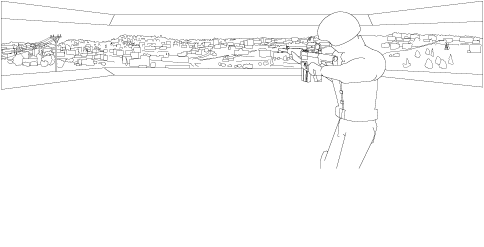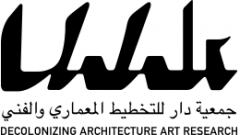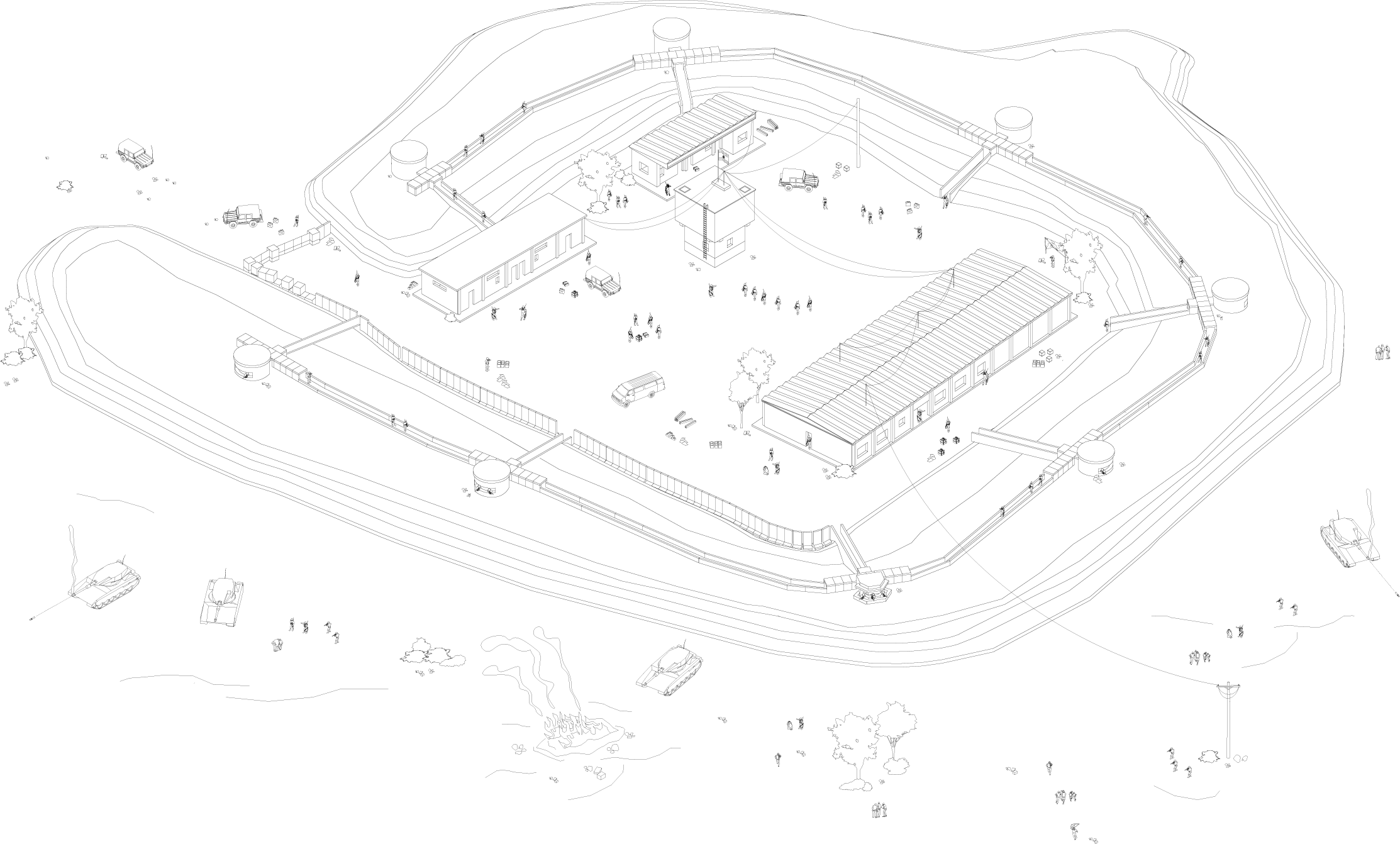
Setting of Oush Grab post. The military base is organized around several nexus of infrastructure located at the top of the hill, such as a water tank and a telecommunications tower [1]. The main access to the post is guaranteed by a service road on the eastern side of it [2]. The center of the compound was used for offices and the barracks of the soldiers [a]. During the second Intifada the army built an embankment [b], concrete towers and a trench around the perimeter of the base. Soldiers practiced shooting in a shooting range located in the valley under the hilltop. The range was connected to the military post with a tunnel [3]. In the western side of the hill a tank parking was built [4]. An area extending into a radius of 300m around the hilltop was declared off limits to anyone but the military [c]. All approaching it were shot at. Despite the law of the land of the State, the owner of a field next to Oush Grab post succeeded in maintaining his own property [5].
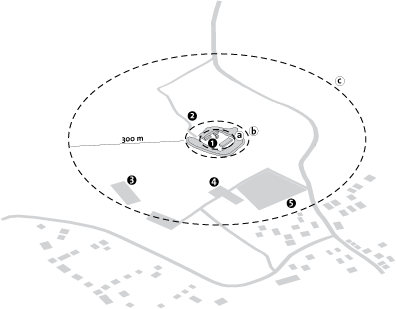
Military bases. Most Israeli military bases in the West Bank were constructed on the sites of former Jordanian ones, themselves often inhabiting the location of former British bases, themselves sometimes inhabiting sites of Ottoman bases. This has two main reasons: firstly, the tasks of military bases in the region has most often been population control, demonstrating the fact that the area has been often ruled by foreign militaries. Secondly, the location of the bases follow a clear topographical logic, they often inhabit the hilltops overlooking the main traffic arteries.
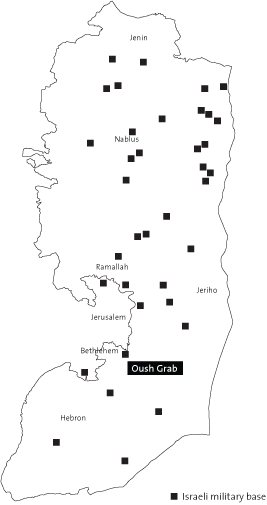
Johny Mattarawh house. During the second intifada many houses around the military post were hit by tank fire. On the November 5th 2000 the house of Dr. Mattarawh was partially destroyed by Israeli shell fire.
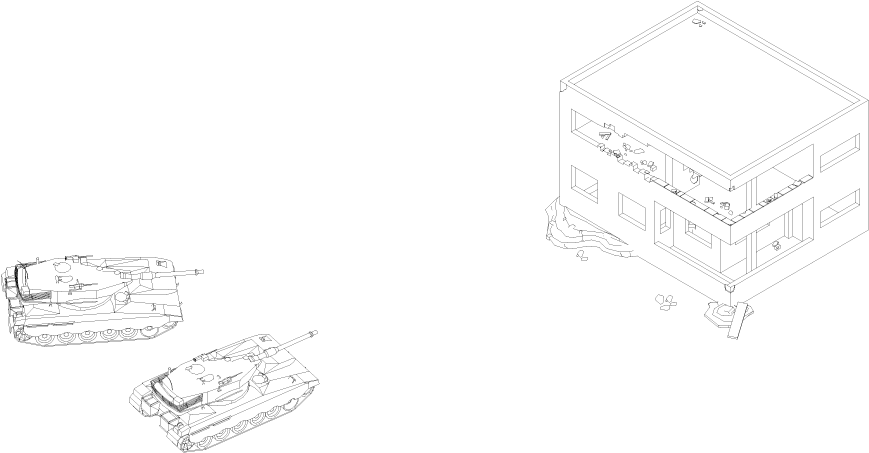
Restricted expansion. Bethlehem is surrounded by various types of Israeli territorial and security measures. On the north and west by the wall that holds its expansion and connection with the southern neighborhoods of Jerusalem’s metropolitan region. From the south it is cut off by the new bypass road and formerly by Oush Grab. The fact that the city cannot expand means that it is ‘eating into’ its open spaces. Horizontally limited by the wall and roads and vertically by a “preservation” policy that seeks to keep the city’s traditional nature, the Bethlehem region has been transformed into an island of conjured “authenticity” within an ocean of Jewish construction. Its architecture functions as an object of aesthetic contemplation to be seen from the concrete-built but stone-clad Jewish settlements.
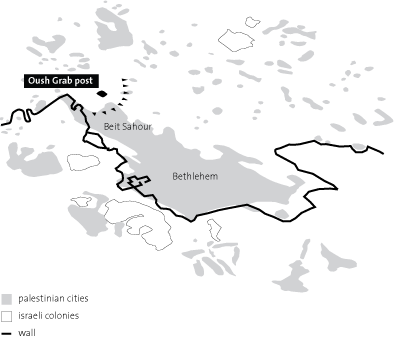
Surveillance. The position of the military post allows the military to have a broad and clear view of the town of Beit Sahour.
